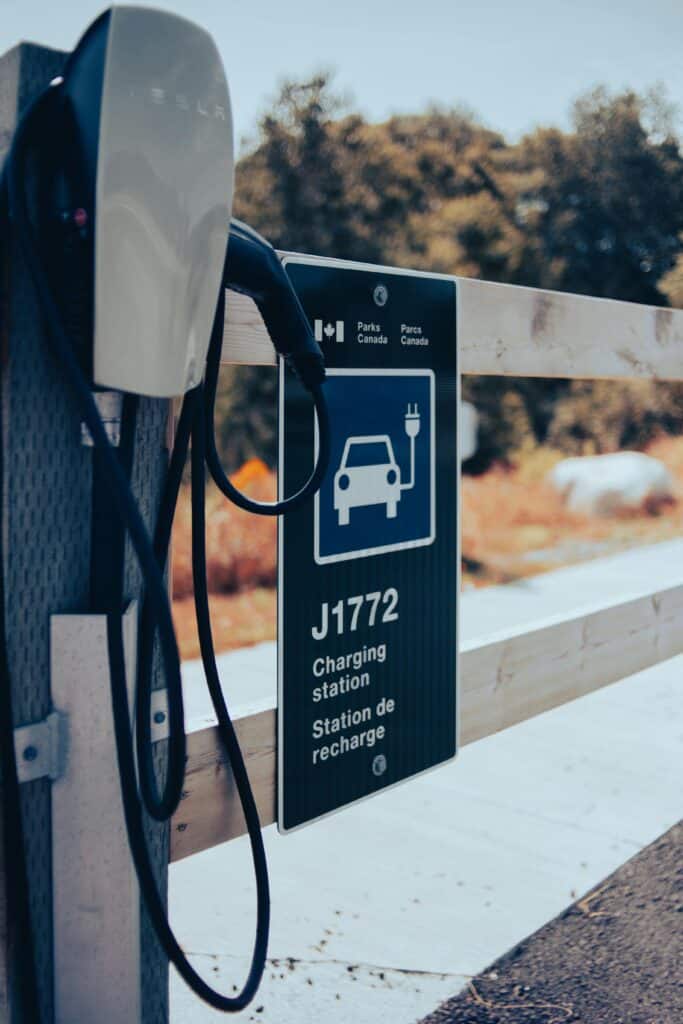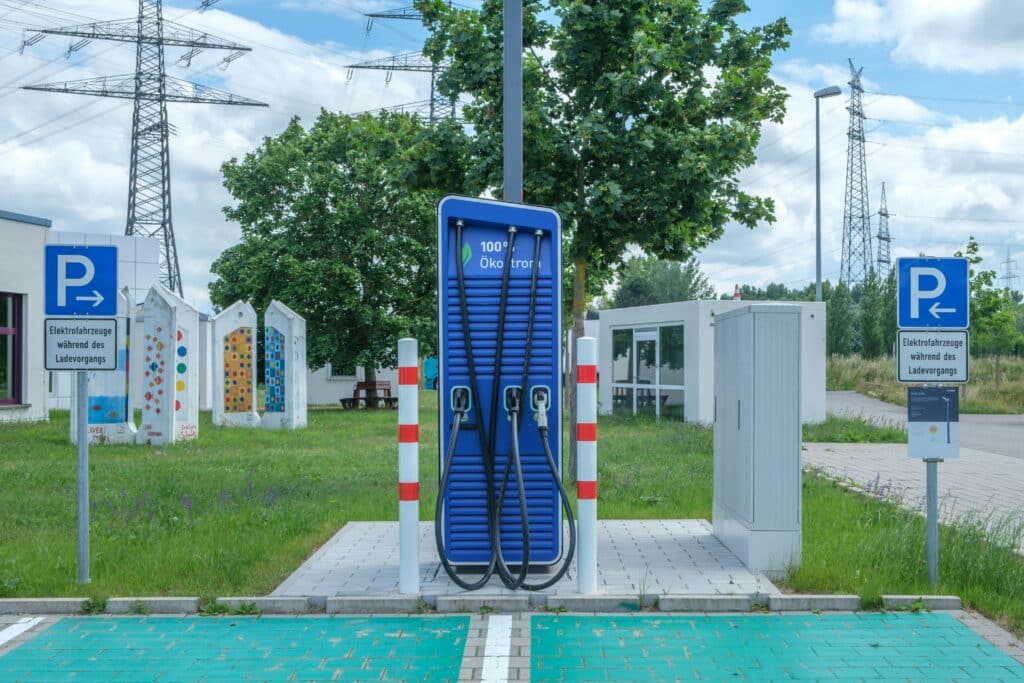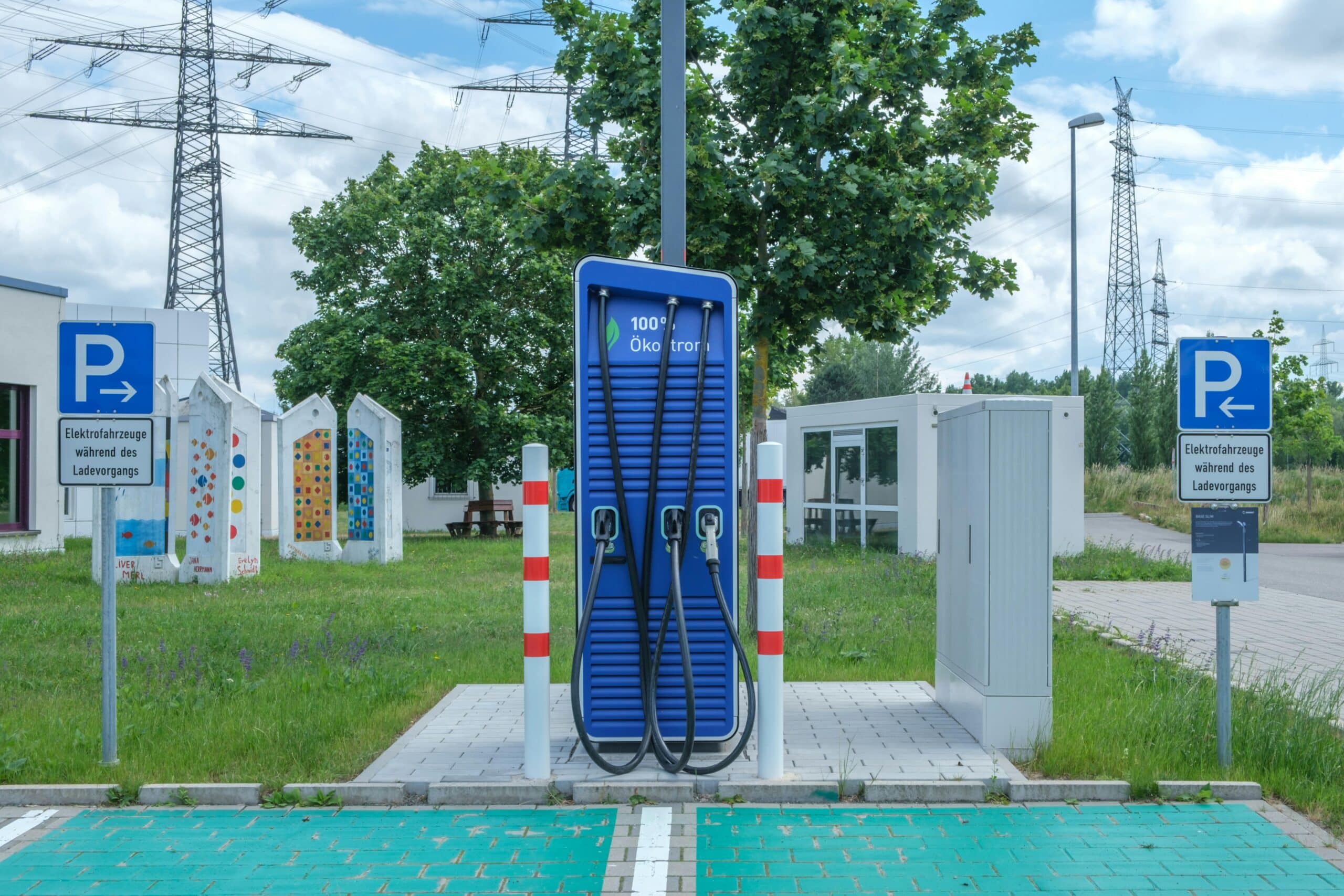Charging and infrastructure go together. EVs are charged through chargers. But installing those chargers can be kind of a pain. Especially if there’s nowhere to get information on what needs to be done.
How do you install chargers? There’s many things that go into installing charger stations: Infrastructure, picking a charger, and picking the right spot for chargers. There are many people that will need to be contacted and will help with the installation process.
Infrastructure
Infrastructure is all of the components needed to power chargers and the building of those components. Before a charger can be put in the ground to power an EV, there needs to be infrastructure to power that charger.
There are many parties involved in getting the power from the utility point of connection to the chargers. The utility point of connection is wherever the utility is providing power to, whether that be from a new transformer or an existing panel.
Who to Contact
In order to install infrastructure, the electric utility is the first entity to contact. In order to install chargers the electric utility must ensure that there is enough load (power) to handle the new charging stations. When contacting the utility, ask to discuss load requirements for chargers and timeline for getting that load.
Utilities also sometimes have programs for charging infrastructure. Ask the utility to see if they have any of these programs. These programs may be designed to help with funding or with contacting the rest of the individuals that are needed to install the chargers.
The second entity to contact would be a design and engineering firm. The design and engineering firm will design the plans that bring the power to the chargers. They also insure their designs meet national electric code. The utility might have contacts for firms, but here are some to look into: Kimley-Horn, CoreStates, and PxT.
There are many other individuals that will need to be contacted such as: authority having jurisdiction (whoever will provide the permit), contractor, local city or county inspectors, third party special inspection agencies and others. Some will be constant across sites and some may be specific to your site. Check out this article about who to contact when installing EV fleet charging infrastructure.
When installing infrastructure it’s good to know how many chargers are needed and what type of chargers will be used. The utility will need to know this information in order to make sure there is enough load available for the chargers.
Picking a Charger
Picking a charger is so important because not every charger can be used for every car. Vehicles currently have no standard connection type. So depending on the vehicle would depend on the connection type. Which means vehicles should be selected before chargers are picked.
There are three main types of chargers – Level 1, Level 2, and Level 3 or DC Fast Chargers. And there are different types of connectors that can be used on those chargers.
The main connectors are J1772, CCS1, NACS (North American Charging Standard – Tesla). There are some other European connectors. Some cars and chargers only have specific types of connectors. You need to make sure that your specific car has the right connector for the charger.

Here is a brief breakdown of the main types of chargers:
Level 1 is similar to plugging into a regular home socket. This is for long dwell charging and takes over 24 hours to charge on average.
Level 2 is similar to the plug for a washing machine or a dryer. These chargers are overnight charging and it can take between 4 to 8 hours to charge on average.
Level 3 or DC fast charging is commercial and charging can take less than an hour.
Chargers are labeled as type by how many kilowatts (kW) the charger outputs. kW is an electric unit of measurement, There are different kW outputs within each level. kW output can also be thought of as the charging speed.
All light and medium duty vehicles can use level 1 and level 2 chargers. Heavy duty vehicles should use DC fast charging because of the battery size.
For a full breakdown of chargers and charging speeds, including more information on level chargers, please see How Long Does It Take To Charge an EV?
Picking the Right Spot for Chargers
Picking the right spot for infrastructure and charging stations to go is arguably the most important piece in your EV journey. Once those chargers are in the ground, they won’t be moved, so it’s important to get it right.
One of the things to consider is the proximity to the utility point of connection. This is the main cost driver of the installation process. The farther away that point of connection, the more infrastructure that will need to be installed, and the more expensive the installation will be.
Where are the ingress and egress to your site, where are the driveways. This ensures that no one is blocking the flow of traffic.
Do you want pull through stalls or traditional stalls? This will change the way the chargers are oriented.

Also, how will the chargers be oriented? Do you want chargers to feed cars that are parked next to each other or across from each other.
Where might you put any potential new electrical equipment that is needed? Make sure it’s not blocking any current walkways, driveways, or parking spots.
Another thing to think about is how the lot is already used. Where does snow get plowed and piled in the winter? Do supplies get stacked in a certain corner? Make sure not to put chargers in any of those spots. Or come up with a plan to change how the lot is being used.
Other Options
Hopefully this gives you a good base of some of the things that need to be taken into account when preparing to get infrastructure and charging stations. There are of course options for charging even if it is not possible to get on site charging stations.
Public charging could be utilized, but may not be ideal. Having onsite chargers would give you full control over the charging schedule.
There are some other options for charging such as Charging as a Service (CaaS), Depot as a Service (DaaS) and Fleet as a Service or EV as a Service (FaaS/EVaaS). If infrastructure is not an option, these may be something to consider. We have a full breakdown of the pros and cons into these services.
We’re happy to help talk about your specific needs and you can schedule an appointment to talk about your use case.
FAQs
Do I Need to Contact the Utility First When Installing Chargers?
Yes, the electric company should be the first contact when installing chargers. The utility must ensure that there is enough load to handle the new charging stations and can help you find the utility point of connection. If there isn’t, it can take 6+ months to get the load.
How Many Chargers Do I Need?
This is dependent on two main factors: how many vehicles are in the fleet and when charging will take place. If there are opportunities to charge in the middle of routes, less chargers may be needed.
Where Should I Put Chargers?
If possible, chargers should be in an area inaccessible to the public to limit vandalism and unauthorized charging. Make sure the area is easily accessible for parking and doesn’t block traffic or have any other uses. You can work with a design and engineering firm to see what would be the best area for you.
Do I Need ADA Charging Stations?
It varies and is based on your jurisdiction site constraints.
How Long Does it Take to Charge?
Charging time vary based on many factors. We have a whole post specific to charging times that you will find helpful.
Which Charger is Right for my Fleet?
This is going to depend on when charging will take place and the types of vehicles that are in your fleet. Not every charger is going to work for every vehicle. Level 2 charging is probably sufficient for most use cases. But level 2 or level 3 is going to be the best chargers for fleets.




